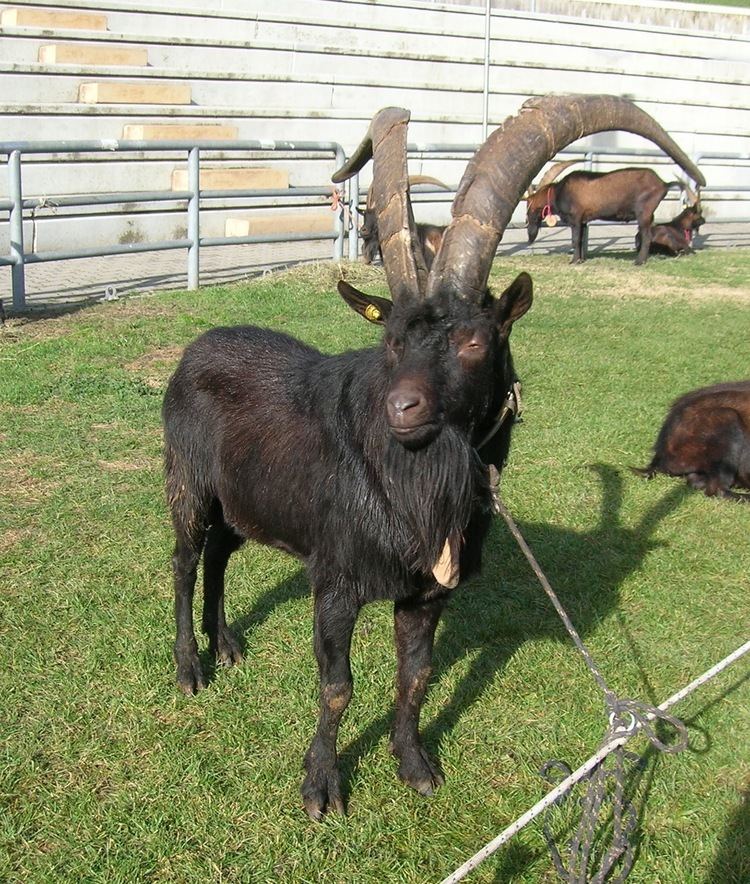Conservation status FAO (2007): critical Distribution Lazio Use meat, milk, combat | Country of origin Italy Standard MIPAAF | |
 | ||
Weight Male: 85 kgFemale: 65 kg Similar Alpina Comune, Bianca Monticellana, Rossa Mediterranea, Bionda dell'Adamello, Messinese | ||
Costolette alla valdostana selfiechef
The Valdostana is an indigenous breed of domestic goat from the autonomous region of Valle d'Aosta in north-western Italy, from which it takes its name. It was in the past distributed in the Alpi Graie and Alpi Pennine. It is now raised in Valle d'Aosta, particularly in the Val d'Ayas and in the Valle di Gressoney; and in the Val Chiusella, the Valle di Locana and the Val di Susa in the upper Canavese, in the province of Turin, in Piemonte.
Contents
The Valdostana is one of the forty-three autochthonous Italian goat breeds of limited distribution for which a herdbook is kept by the Associazione Nazionale della Pastorizia, the Italian national association of sheep- and goat-breeders. At the end of 2013 the registered population was variously reported as 959 and as 856.
Pollo alla valdostana chef pasquale
Use
The Valdostana is kept both for meat, which is consumed both fresh and preserved in the form of goat salame, of Motsetta or of Violino di Capra; and for milk, which is used for cheese-making. A study in 2002 found the average milk yield to be 249 kg in 197 days.
The Valdostana is also much used in the traditional sport of goat-fighting, the "Bataille des Chèvres". Since 1998 this sport has been regulated by the Association Comité Régional Batailles des Chèvres, which organises an annual regional championship. The large horns of the breed are probably the result of selection for this purpose by farmers.
